Barry White wanted something weird. He’s got all that and more in this twin-turbo Kevlar-clad wide-body Commodore!
Words: Todd Wylie Photos: Strong Style Photo
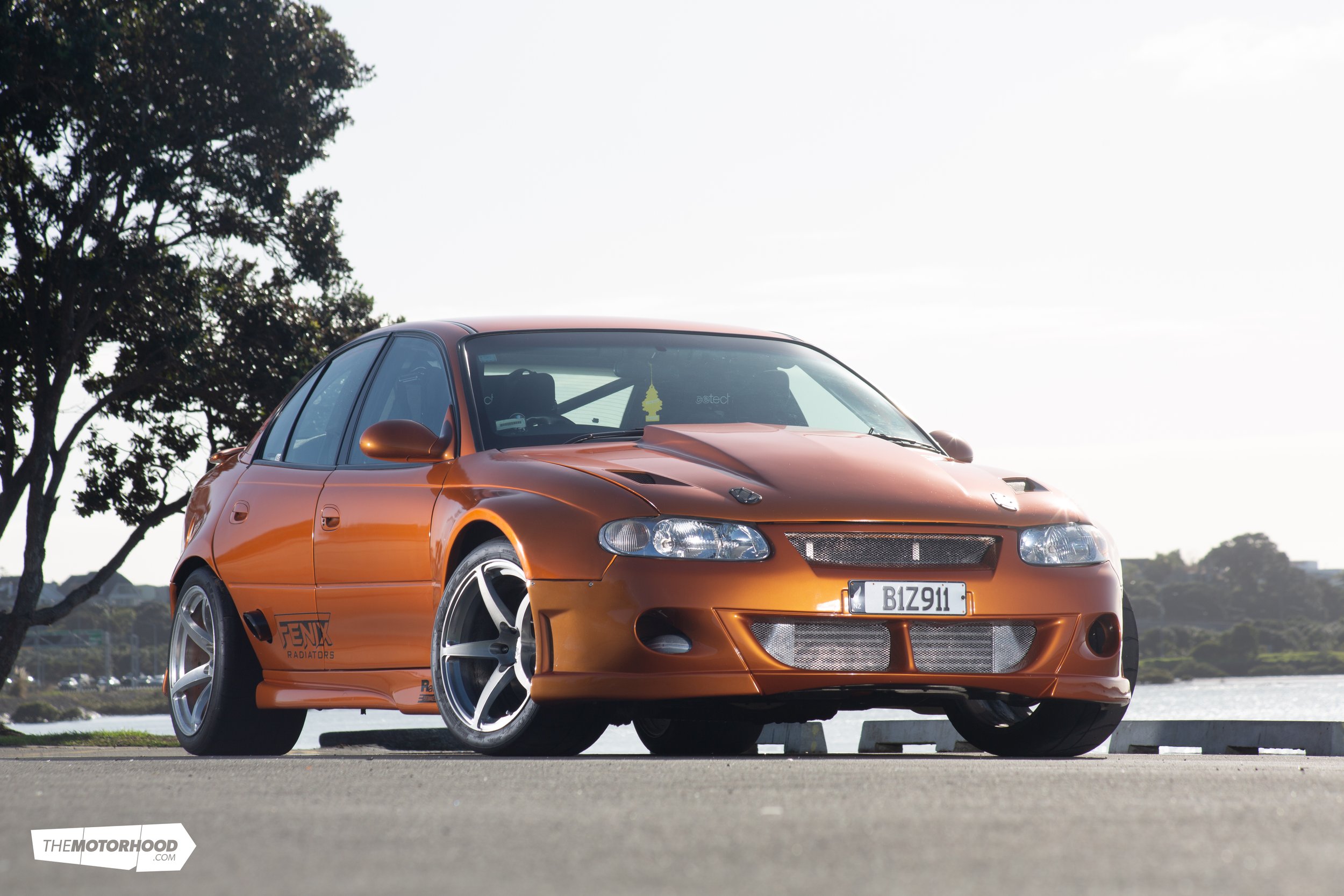
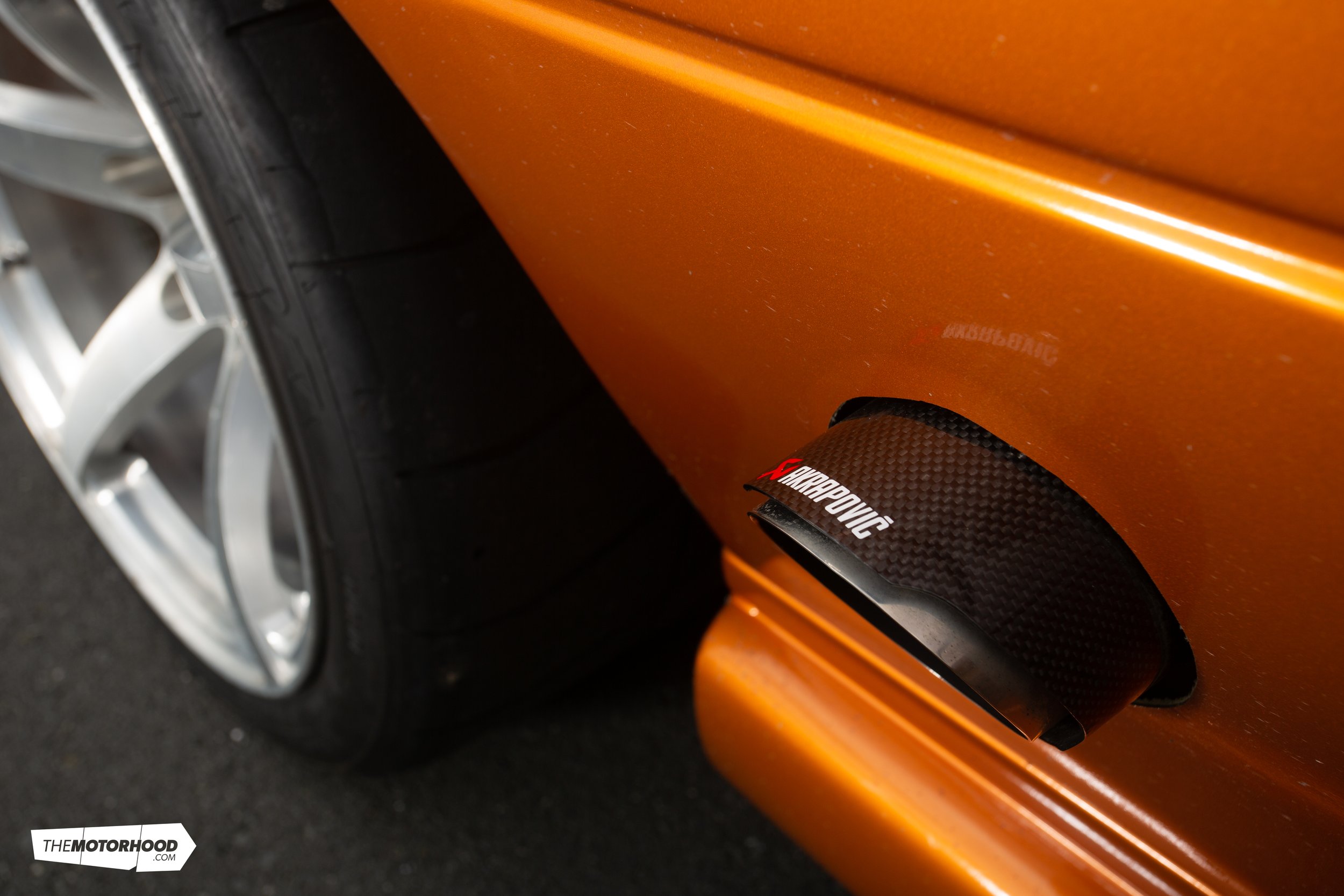
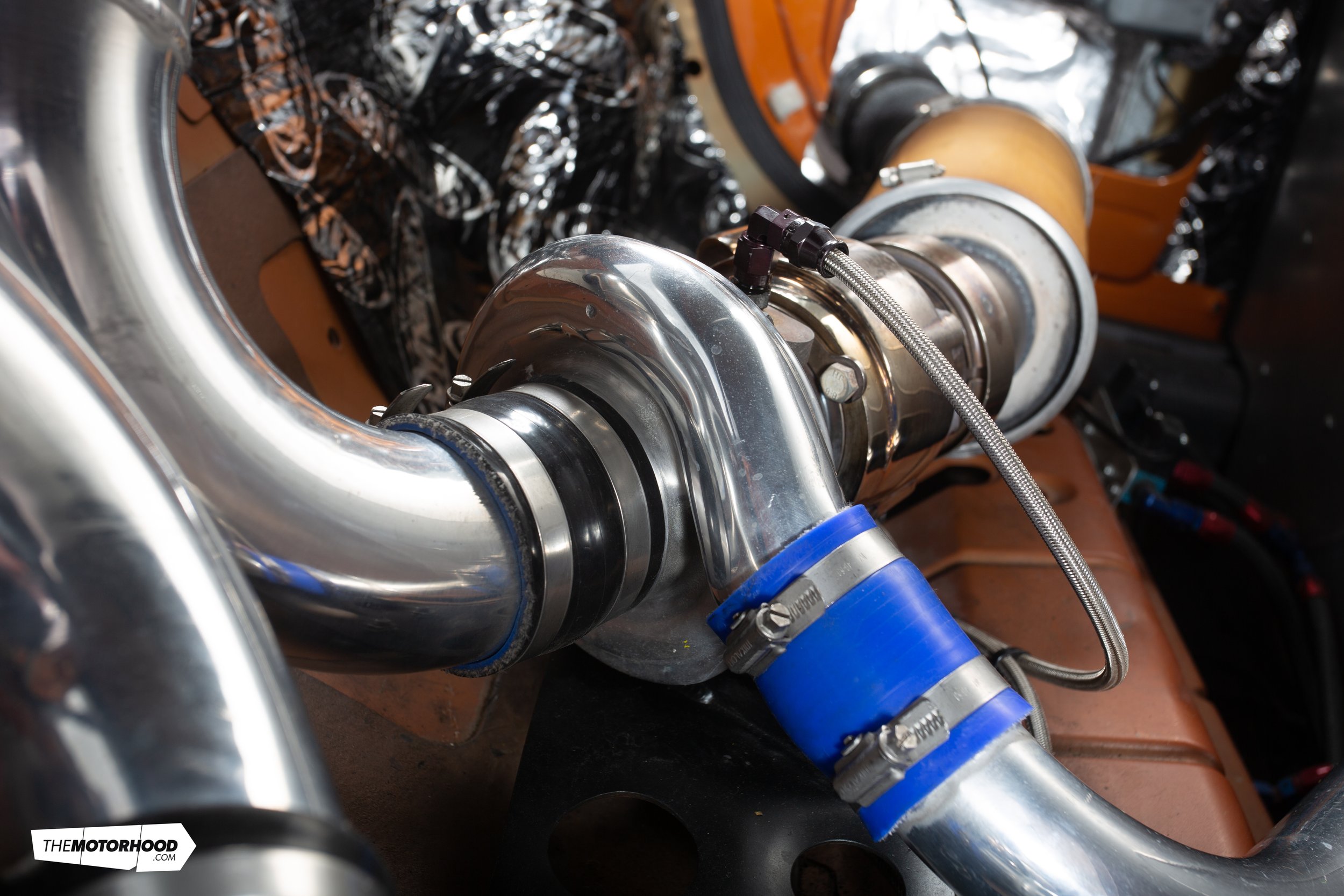
The young Barry White was fun. He had all sorts of vehicles that sensible — non-car — people would frown upon. His daughters claimed they could hear him coming home up the Thames Coast several kilometres before he arrived. Somewhere along the line, though, he turned into a working professional and needed a boring practical car to do all those boring work-type things. That transition forced the sale of a tubbed VG Valiant with a 500hp 440 under the hood.
While behind the wheel of the boring work cars, Barry had plenty of time to dream about the day he’d get back into something fun again. Having owned plenty of Japanese turbo cars amongst his various V8s, he’d often had the thought of combining the best of both worlds. His awareness of the work performed by American turbo pioneer Gale Banks only cemented this desire further, to the point at which he knew that, when the time was right, he’d make it all come together.
He tells us, “It was only a matter of time and money, and by the time I had both they [turbocharged V8s] were common, so I wanted to think differently.” When pushed a bit more, Barry gave us the full wish list that set the course for what you see today. “I wanted the magic of two hair dryers and a decent-sized V8, but I also wanted to do a few track laps, and most of all to be able to do week-long Targa events — both the Targa Tour and eventually the full Targa competition. In fact, I had so much fun on Tour I never got to the competition.
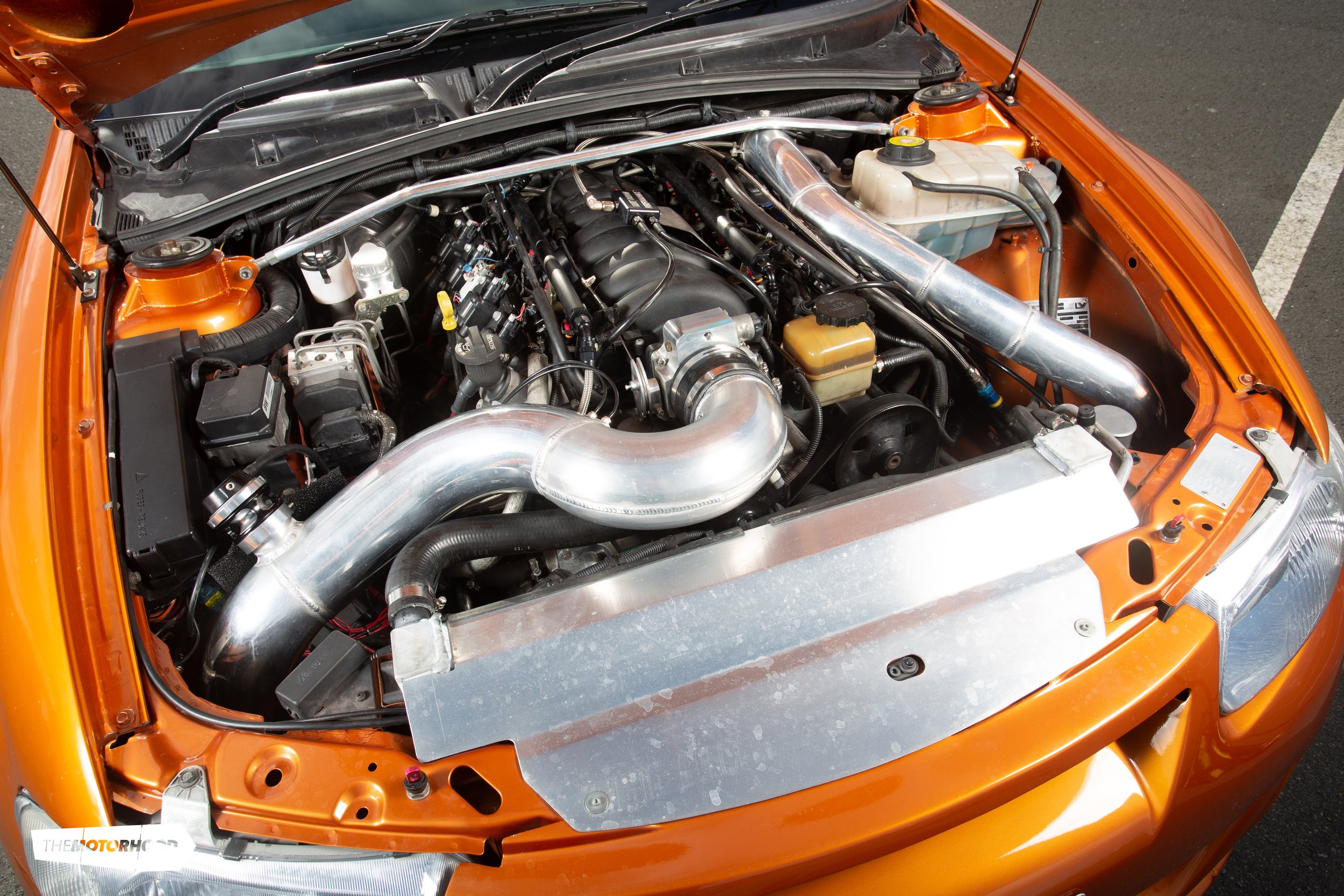
“My requirements meant a few things needed to be thought out. Being on and off the throttle for extended periods on closed road events and on twisty roads meant the car had to be nimble and not too heavy. It also meant heat would be a huge issue. So, did I really want two red-hot glowing hair dryers under my hood? Did I really want the low-slung look that couldn’t pass over a dead possum let alone jump a crest? Did I need boost from a standstill, or a manageable powerband that, with the right combination, got traction even in the wet?”
The answers to Barry’s questions were well thought out, even if at the time they seemed nonsensical to most. He tells us, “No, was the answer. A blower would be so much easier but would shift weight up front and right up high — not ideal for being nimble and not ideal for reducing heat soak. So, with this in mind, remote-mounted turbos were the only way to keep the heat away from the engine bay and move weight back.
The car this would all happen in was a 2000 Commodore VT SS — a car Barry purchased in 2008 and took almost directly to get its first retune. This was followed by a custom cam, and the realisation that if he acted straightaway he would likely be the first person in the country to have a rear-mount turbo set-up. Robin Van Velden, who owned Torque Performance at the time, was more than keen to help bring Barry’s wish list to life — assuming the right bits were used, of course.

“I liked what STS was doing in the USA, where they had a C6 Corvette with LS3 making over 600hp at the tyres and getting close to 40mpg at a steady cruise. After speaking with STS founder Rick Squires, I imported a kit designed for the USA Pontiac GTO — their version of our Monaro — which was the same platform as my VT SS. Torque Performance did the install and tuning while Ronnie at RSL did the fabrication,” states Barry. “In fact, we upgraded everything in the kit except the ball-bearing turbos.”
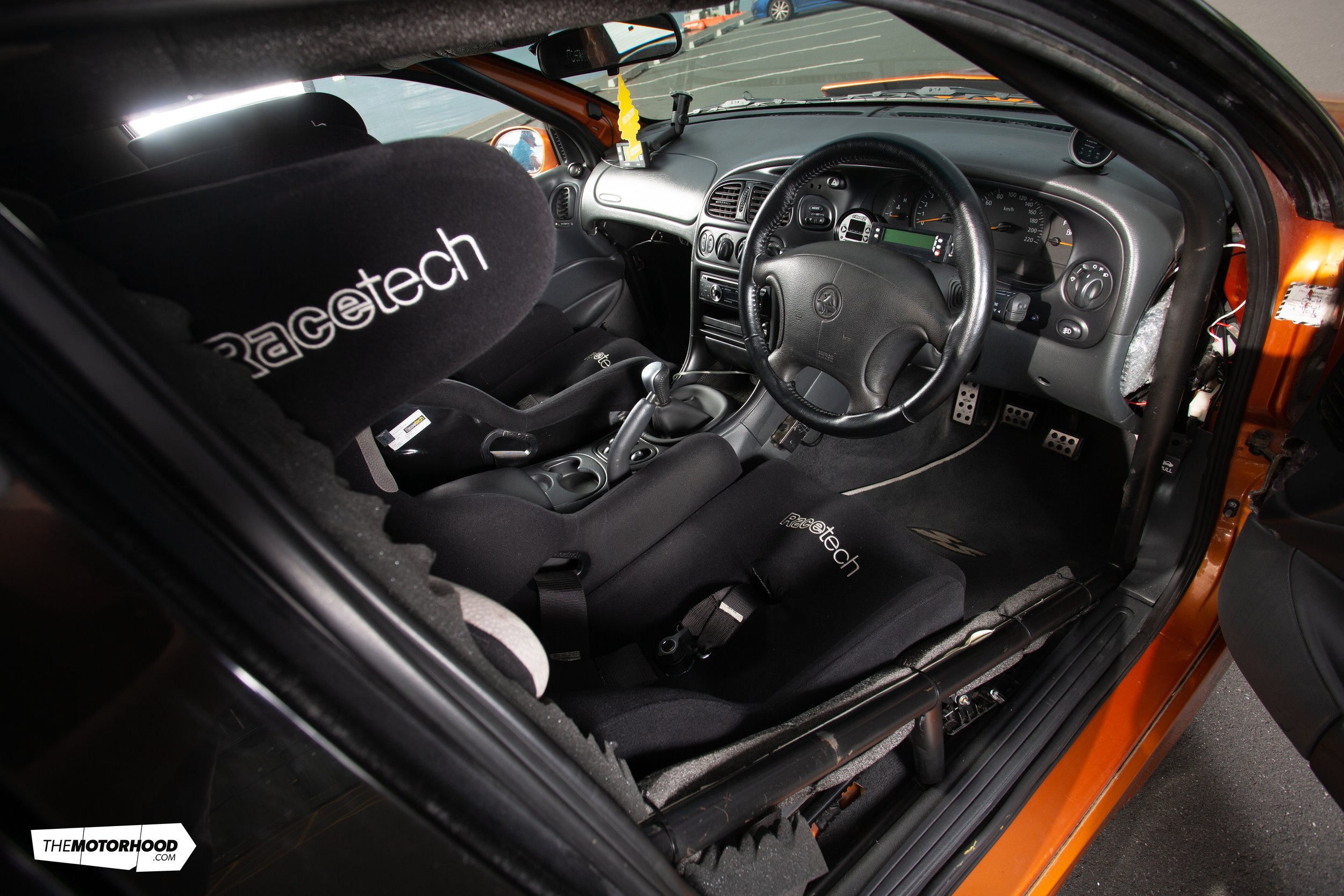
The result was a 450rwhp combo that could still return 9L/100km fuel economy. Years passed, and Barry clocked up around 170,000km in the car before deciding to take it to the next level. As luck would have it, an LS3 popped up for sale just as he was considering a major forged build. Having been pulled from a Camaro that had been wrecked with just delivery kms on the clock, it was the perfect starting point. Unwisely, Barry left the ring gaps stock, and added a cam and.040 gasket for a very tight squeeze and around 11:1. While the car did make 663hp at the rears like this, it also burnt up three autos before he made the switch to a manual box.
Things went bad once more when it broke seven ring lands. So, in 2021, it was torn down and rebuilt by Rex Danby at Danby Machine & Development in Thames. During that rebuild, JE Ultra Series pistons were fitted to drop the compression ratio, along with JE Pro Seal rings and Molnar H-beam Power Adder LS 6.125-inch rods.
Wanting it to last the week of punishment that Targa offers, Barry made sure plenty of effort went into the smallest of details before the fun bits could be added. “I hate peaky turbo cars that are wimpy until they suddenly snap and try to kill you. I wanted something that had balance and response and usable power,” he says.
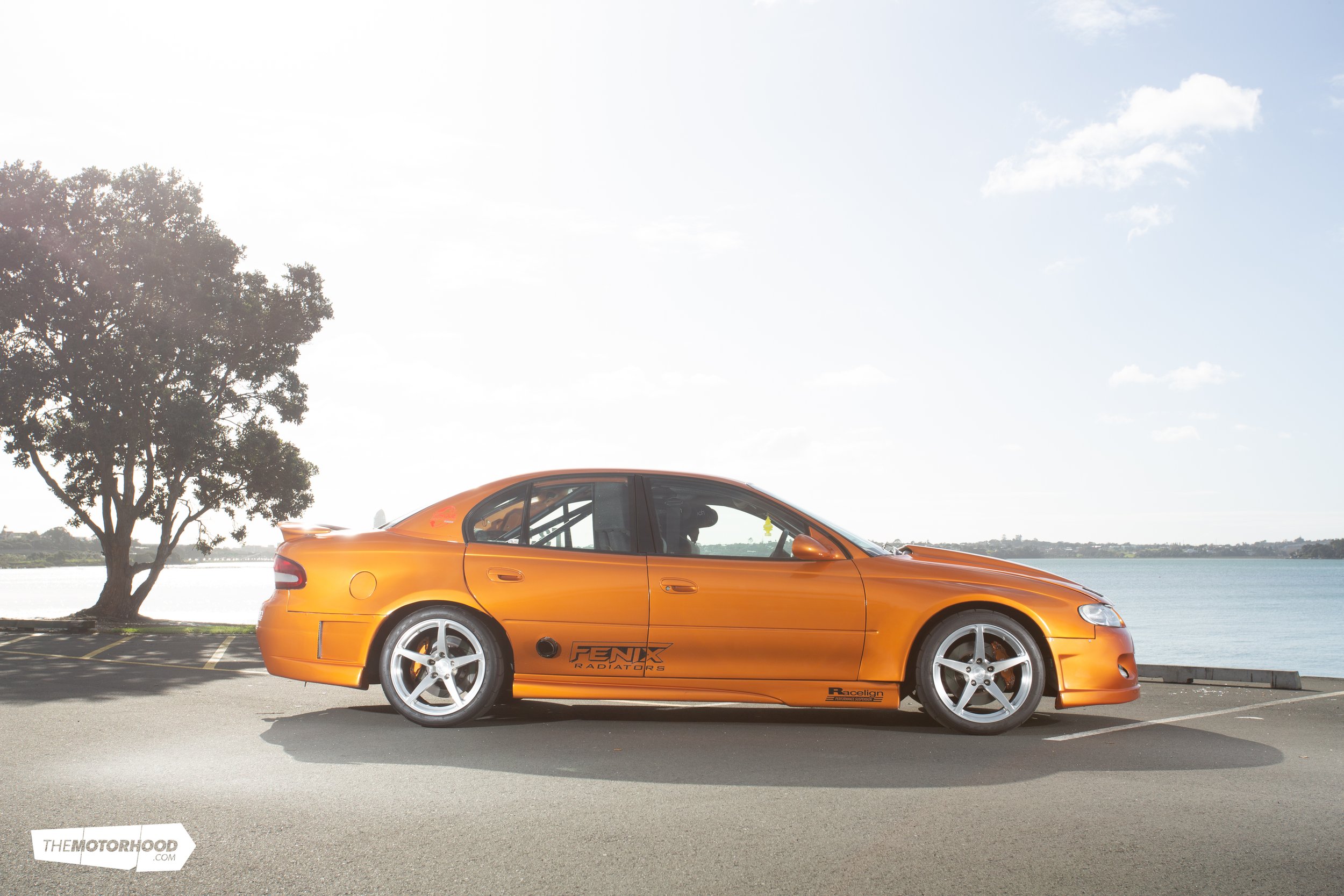
So, with this goal, custom 4-into-1 long tube headers were fabricated that lead into 2.5-inch pipes terminating in the rear seat area. There, they join a pair of Bullseye Power S252 BatMoWheel series turbos with billet SVO stainless turbine housings. The custom air intakes go backwards into the walled-off boot area, while a custom firewall sections the driver’s compartment away from the heat the set-up creates. Short stainless steel exhausts then extend from each turbo straight out the rear doors utilising four-inch carbon fibre Akrapovič tips to ensure no shins get burnt as they pass by.
Cutting the holes for the exhausts wasn’t quite as hard as it sounds, as by this stage the doors themselves were no longer steel but Kevlar. The Kevlar panels, including rear doors, wide-body rear guards, and wide front guards all came courtesy of Nick Chester’s GT1-spec Commodore race car, although fitting them wasn’t straightforward.
“I didn’t realise his race car had narrower mount points than mine, so everything had to be customised, causing Derek some sleepless nights,” Barry explains. The Derek that Barry refers to is Derek Mitchell of MRX in Hamilton, who was also tasked with building the car’s six-point roll cage.
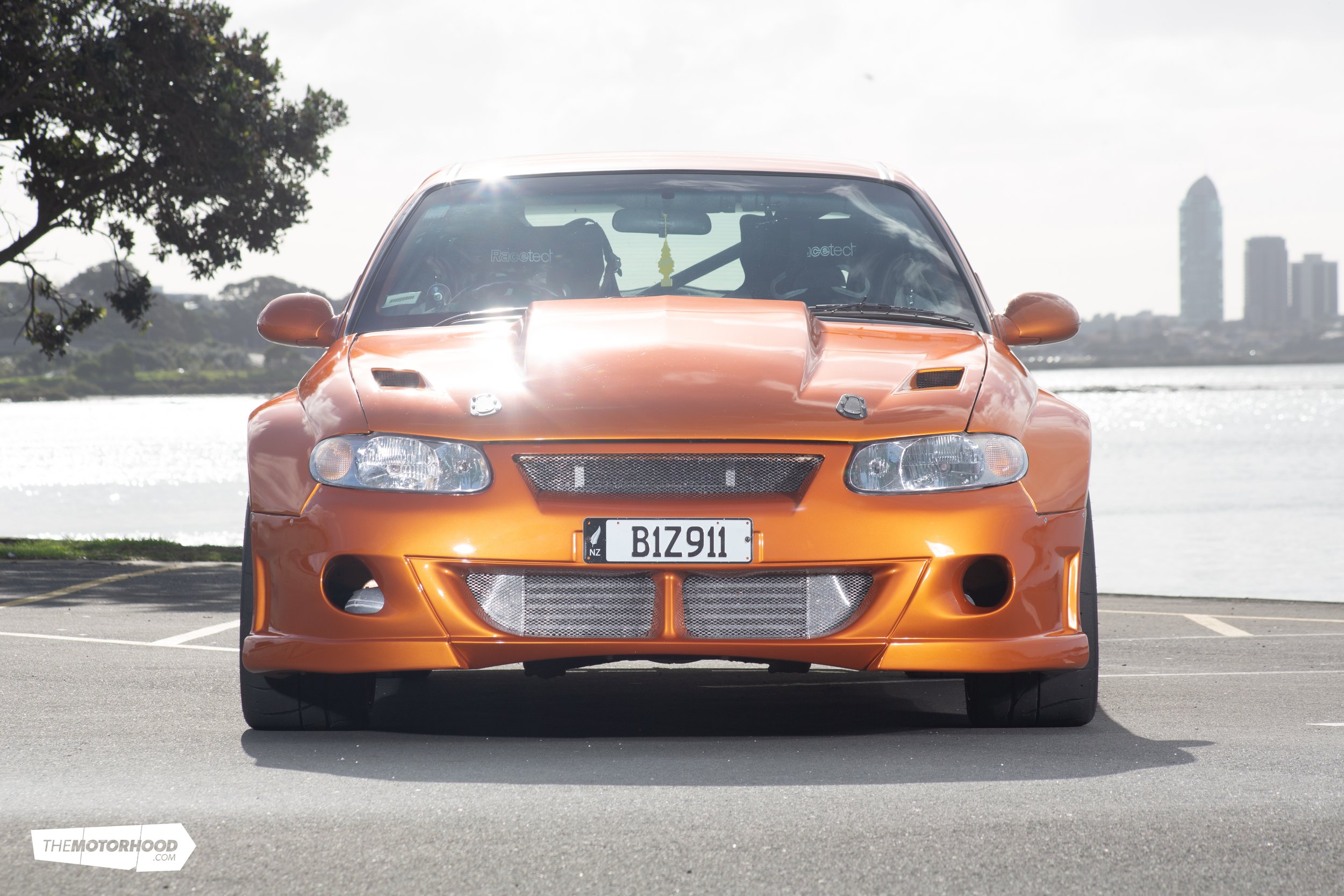
The front panels on the car also came out of Hamilton, this time from Mike Shaw at MS Fibreglass. All of the panels have been vinyl wrapped in the Commodore’s factory Tiger Gold hue, to give what could at a glance be mistaken for a factory paint job.
While many people would expect a car designed for competition to be dropped as low to the ground as possible, Barry chose a more sensible suspension set-up. Iain Wilson at Autolign was responsible for assembling the custom Bilstein coilovers and supplying the Whiteline 30mm front adjustable sway bar and 18mm rear sway bar.
With this suspension set-up and sticky Nitto NT01 tyres wrapped around the 18×10-inch and 18×12-inch BC Forged RS45 wheels, Barry describes the car as handling somewhat like a go-kart. In fact, he’s had so much fun in it doing the Targa Tour — which essentially lets you drive some of the country’s finest roads using both lanes at speed — that he’s never felt the need to do the competition version of the event. While the car is no doubt capable of it, especially with an estimated 700hp at the tyres pending a fresh post ‘run-in’ tune-up, Barry’s decided he’s actually achieved all of his goals with the car.
He was the first with a rear-mounted turbo and is now undoubtedly the only one with back-seat-mounted twin turbos. He set out to build something weird and wild, and that’s exactly what he created. Now is the time to hand it on for someone else to take the next steps with the car, be that on the street or on the racetrack. Barry sums up his time with the car well: “A cake can have 100 recipes that are edible. As there is no holy grail, pick one that fits your tastes and make it work as one.” And that’s exactly what he did.
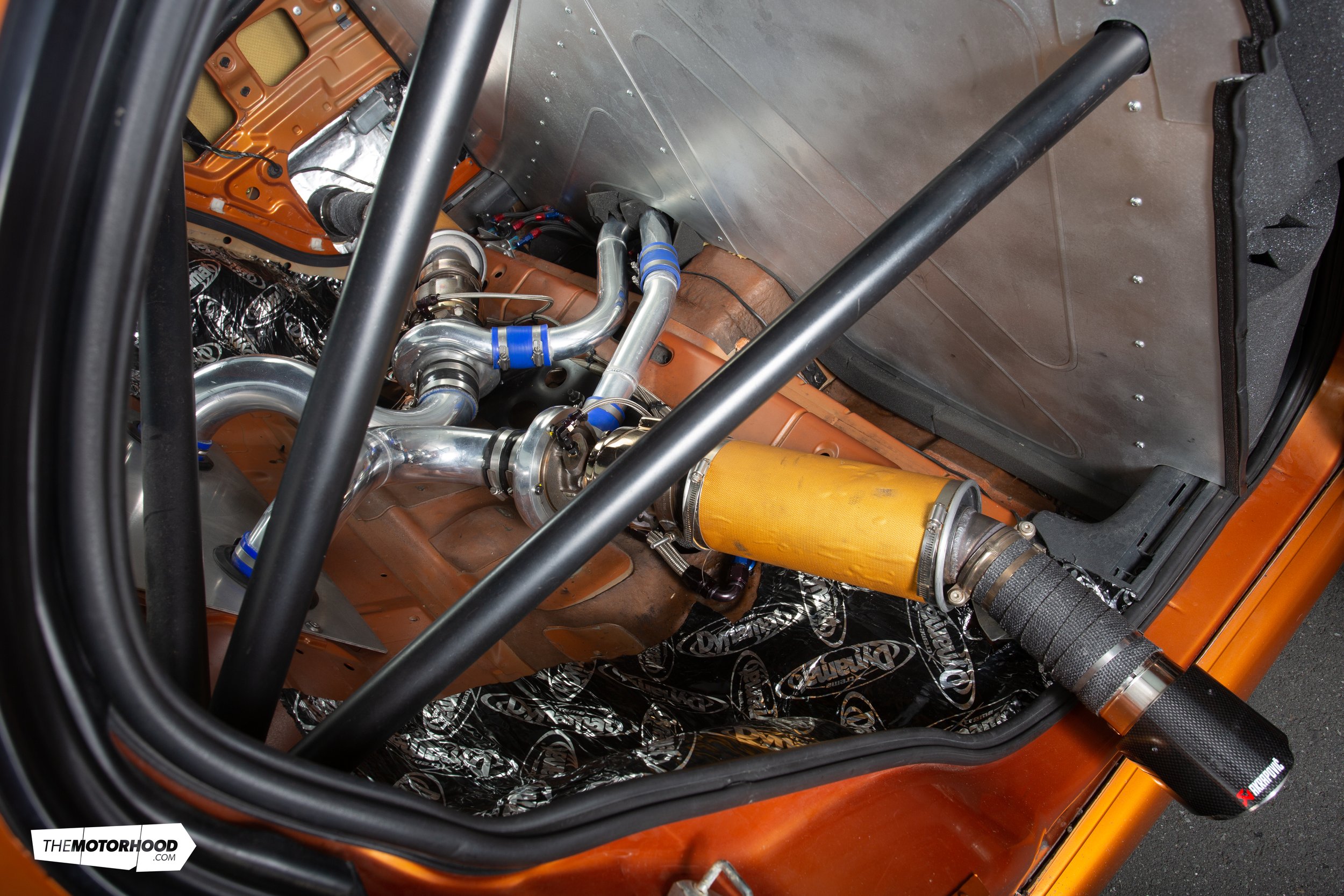
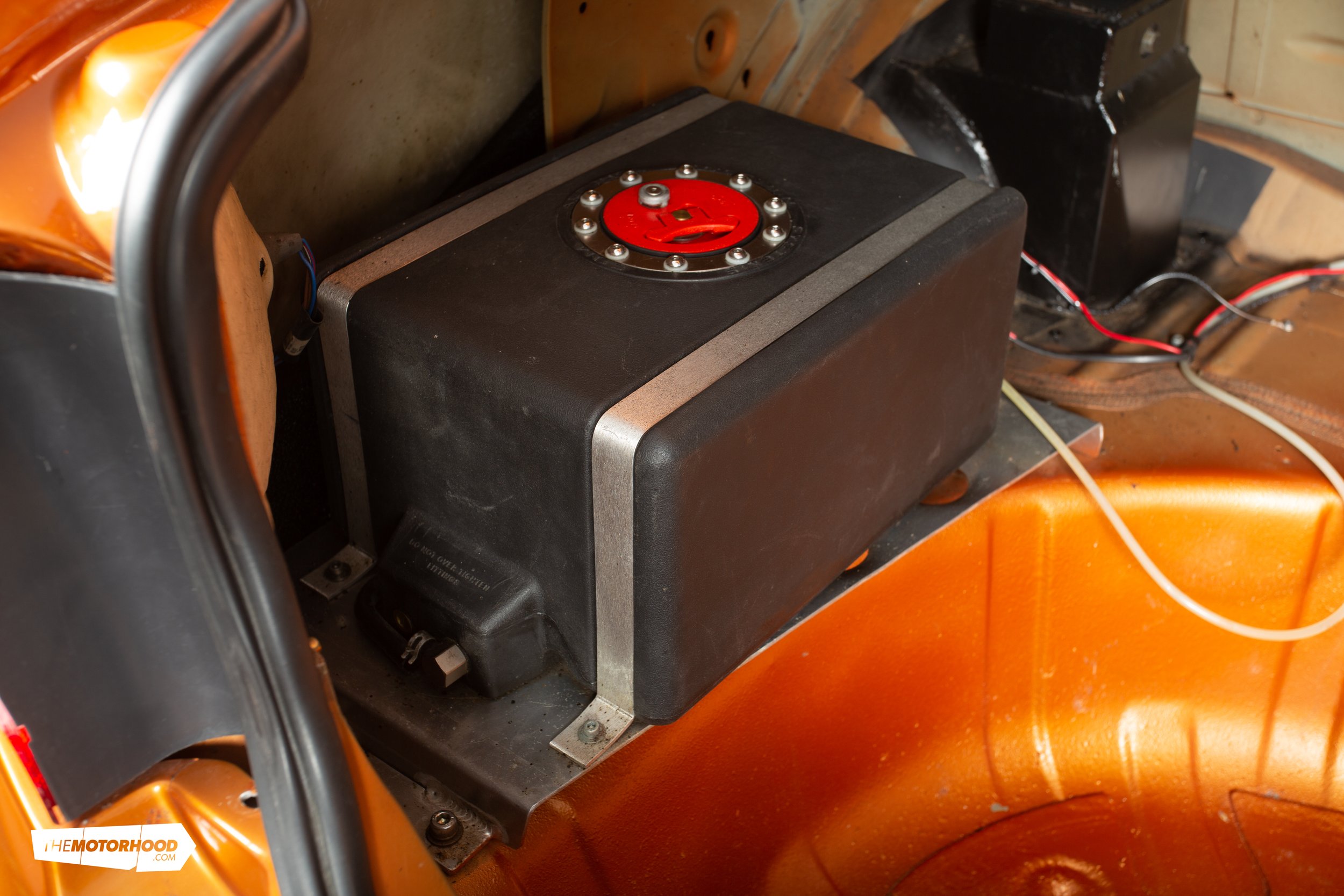
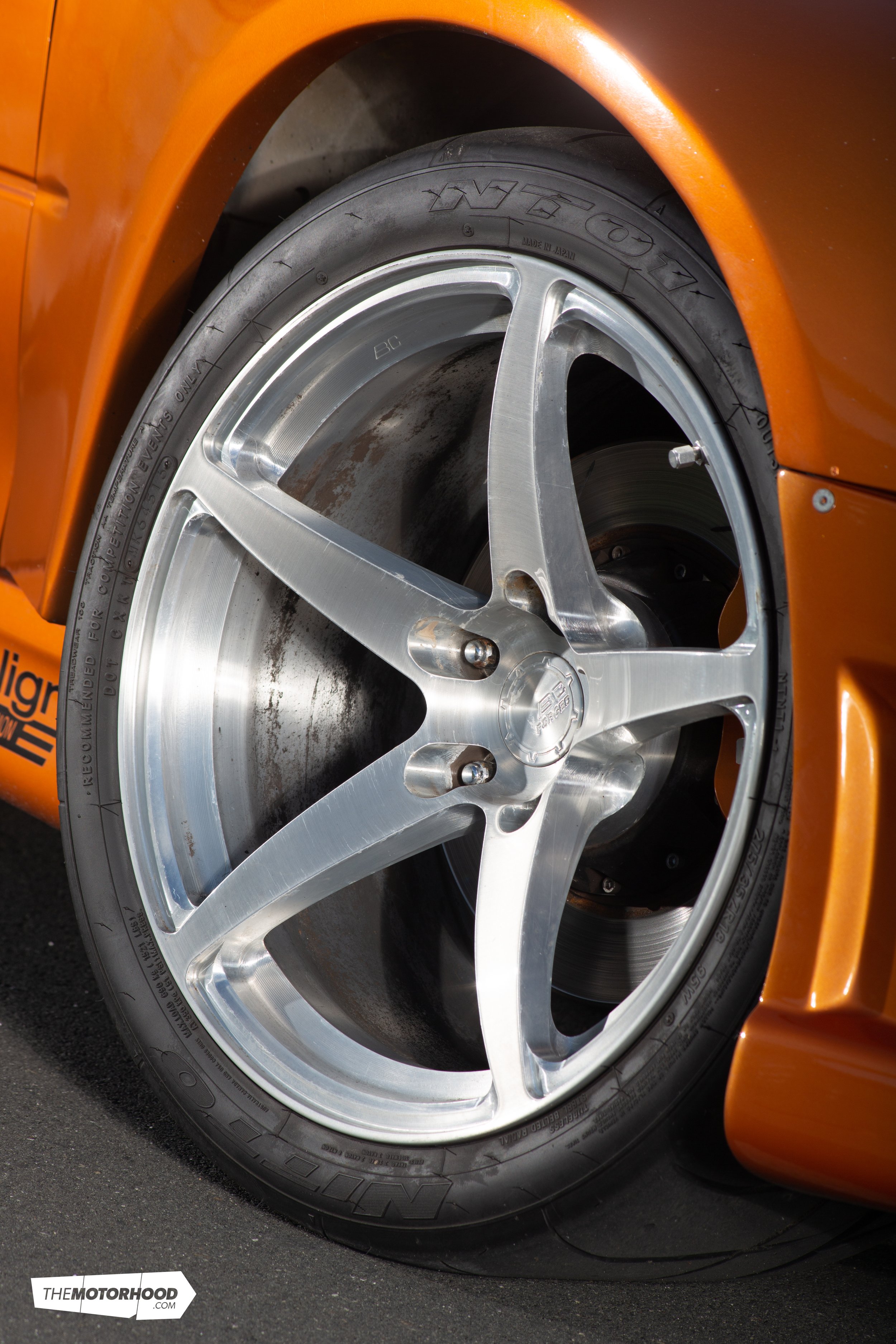
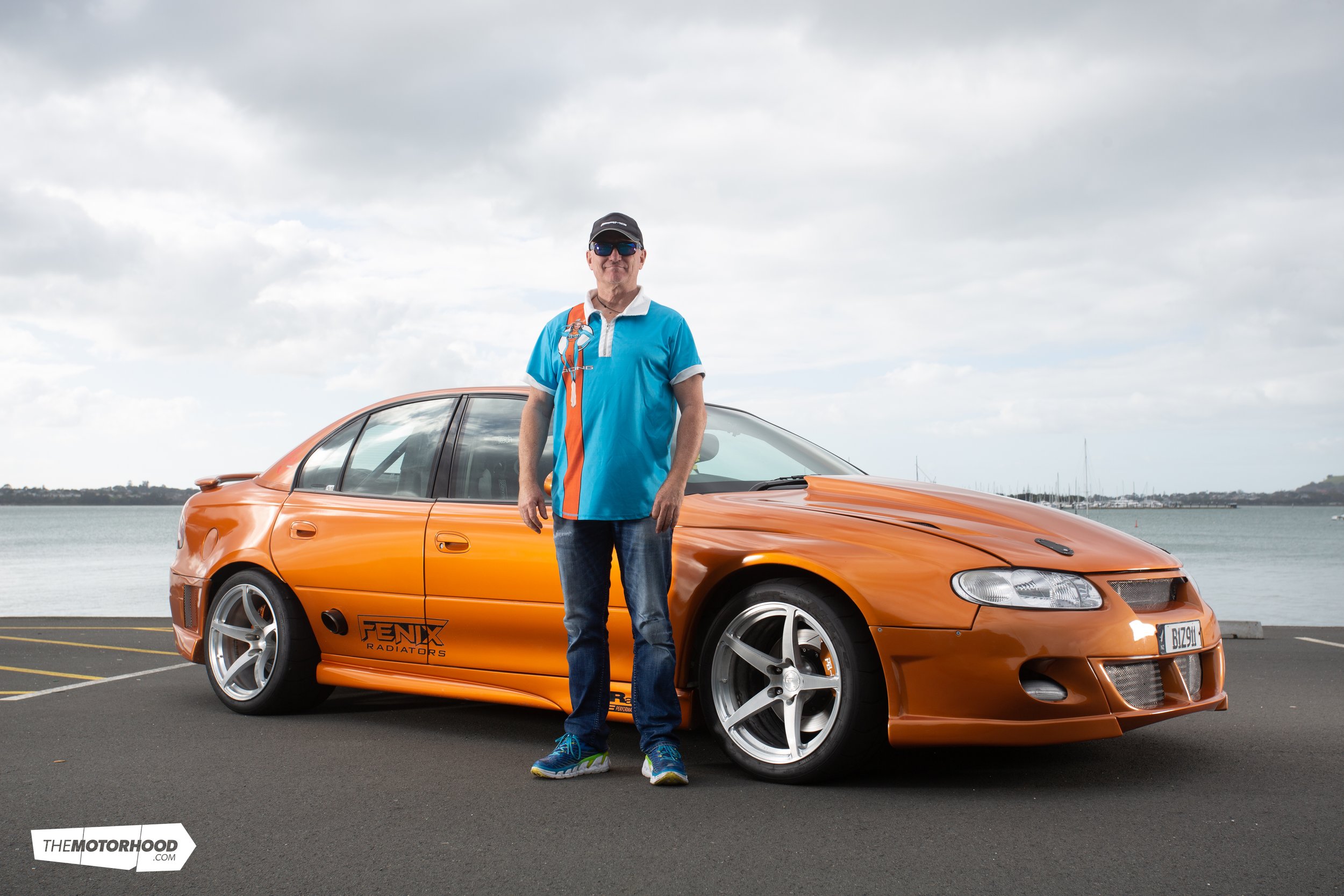
This article originally appeared in NZV8 issue No. 207




